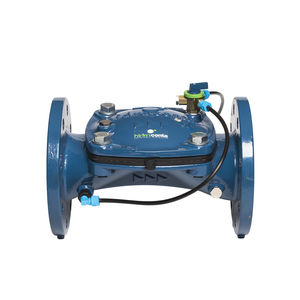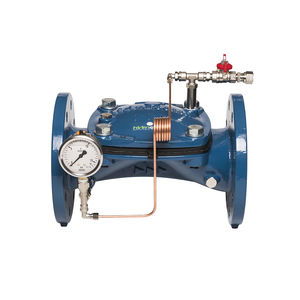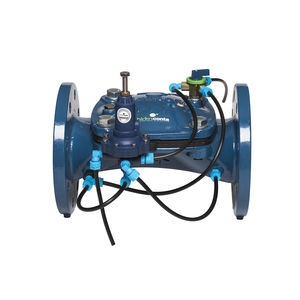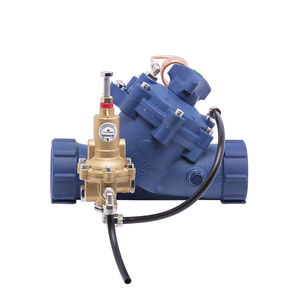
- Farm Infrastructure
- Irrigation equipment
- Irrigation valve
- HIDROCONTA S.A.
Irrigation valve Leopardregulatinghydraulichigh-pressure

Add to favorites
Compare this product
fo_shop_gate_exact_title
Characteristics
- Applications
- irrigation
- Function
- regulating
- Operation
- hydraulic
- Other characteristic
- high-pressure
- DN
Max.: 300 mm
(11.811 in)Min.: 20 mm
(0.787 in)
Description
LEOPARD pressure reducing and sustaining hydraulic diaphragm valve. It is used to automatically reduce the outlet pressure in a water network and hold a minimum pressure in the main high pressure line regardless of demand.
Reducing and sustaining hydraulic valve
Leopard pressure reducing and sustaining valves are available from DN 20 to DN 300 diameter.
Applications
The combined reducing and sustaining valve performs both functions independently. Prevents on-site generation:
•Pressure drops.
•Overpressures.
It is mainly used to automatically reduce downstream pressure in the distribution network and hold a minimum of pressure in the main high pressure line regardless of the demand for distribution.
Functioning
The reducing pilot acts on the valve so that it has a modulating function, in order to keep the downstream pressure constant for the set control value, the holding pilot acts on the valve so that it has a modulating function, in order to maintain the upstream pressure above the minimum control value. The reducer pilot must be adjusted regarding the installation needs.
Turning the reducer pilot screw clockwise you will reduce the outlet pressure. Turing the pilot anti-clockwise you will increase the outlet pressure.
Turning the sustainer pilot screw clockwise you will reduce the intlet pressure. Turing the pilot anti-clockwise you will increase the outlet pressure. Take into account the following aspects:
•Maximum reduction ratio: inlet pressure x 1/3. For example, with a 6 bar inlet pressure the outlet pressure will be 2 bar. Working in pressure under 2 bar the valve will suffer cavitation complications.
VIDEO
Catalogs
No catalogs are available for this product.
See all of HIDROCONTA S.A.‘s catalogsRelated Searches
- Control valve
- Irrigation valve
- Irrigation filter
- Metal irrigation filter
- Screen irrigation filter
- Irrigation controller
- Hydraulic valve
- Electric valve
- Threaded valve
- Control valve irrigation controller
- 3-way valve
- Irrigation flow meter
- Stainless steel valve
- Water flow meter
- Regulating valve
- Gas valve
- Battery-powered irrigation controller
- Cast iron valve
- Air valve
- Magnetic flow meter
*Prices are pre-tax. They exclude delivery charges and customs duties and do not include additional charges for installation or activation options. Prices are indicative only and may vary by country, with changes to the cost of raw materials and exchange rates.















